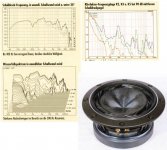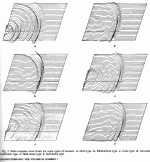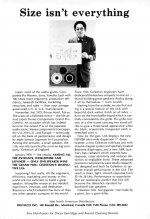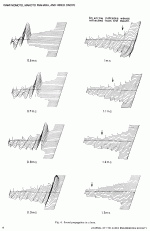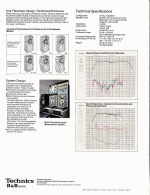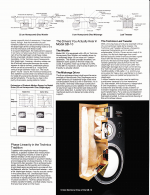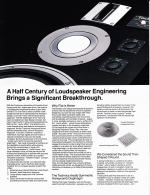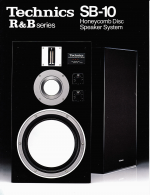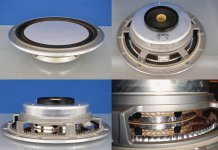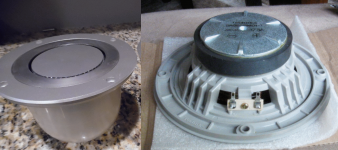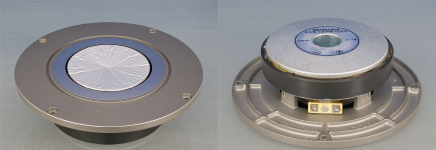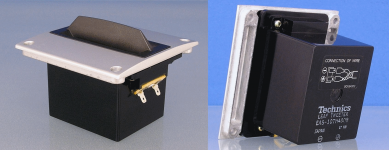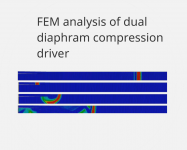

Back on topic.
There are some similarities between the Axidriver2050's diaphragm and those from the Thiel and Fostex drivers.
The Thiel Coaxial Coincident Driver 4.5" midrange driver is not a cone. Its an aluminum diaphragm that resembles a flattened, corrugated doughnut. The tweeter nests into the center, where the dustcap would go in a conventional design. The "corrugations" are radial lobular indentations in the aluminum.
It's a very thin diaphragm that operates pistonically—very close to ideally according to Thiel.
The woofer is another essentially flat driver with radially mounted strengthening lobes. Like the midrange driver, it also employs Thiel's long-gap, short-coil drive system, which keeps the coil within a uniform magnetic field throughout its entire range.
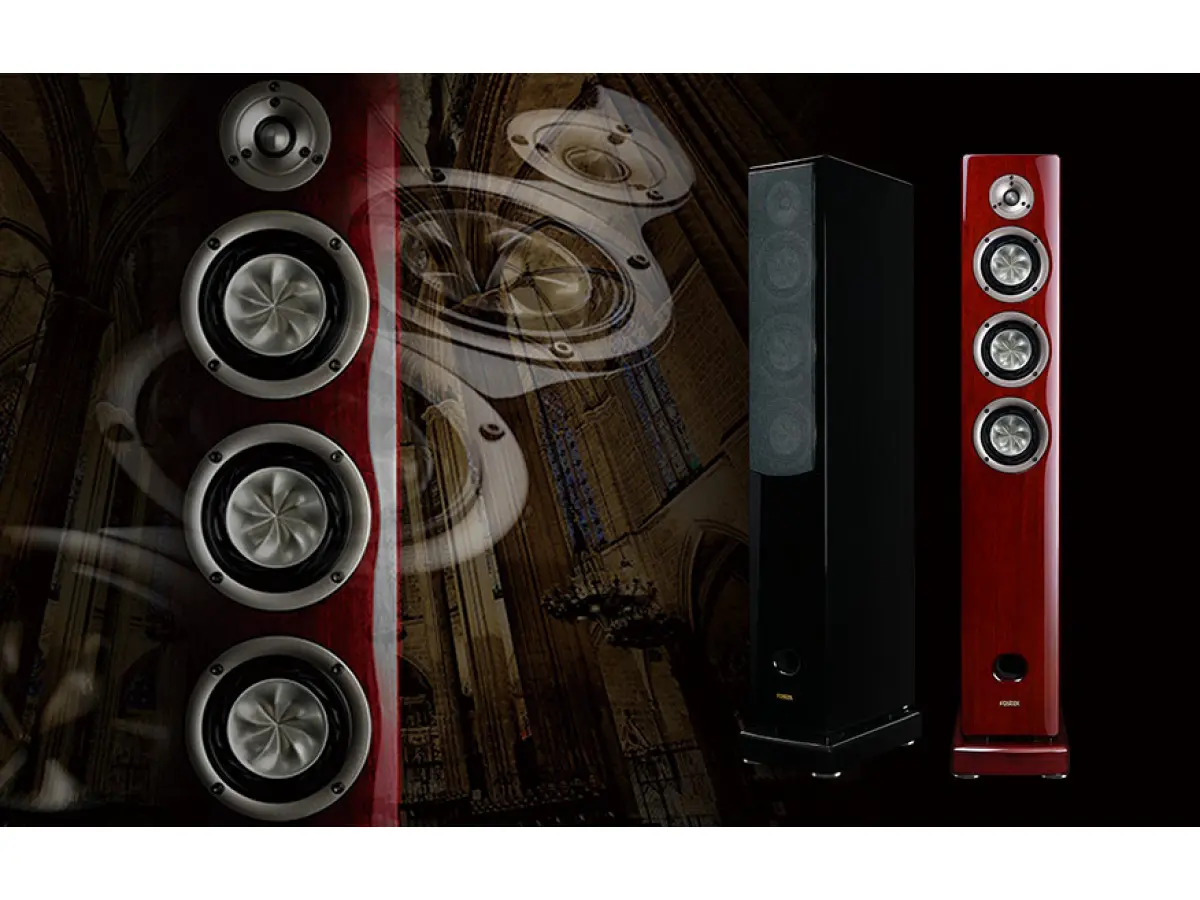
For the Fostex a hi-rigid and reduced inherent resonance HR diaphragm is employed by using a "radial papermaking technique"
and whizzy hybrid materials (whatever that means).
Obviously the claim is reduced distortion. Even the spider is "radialized" (image no. 5).
Attachments
-
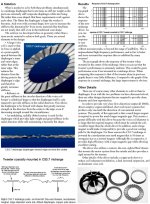 Diaphragm_Normal.jpg257.6 KB · Views: 678
Diaphragm_Normal.jpg257.6 KB · Views: 678 -
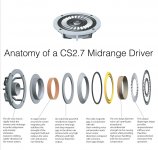 CS2_7midcutawayB_labled.jpg95.7 KB · Views: 696
CS2_7midcutawayB_labled.jpg95.7 KB · Views: 696 -
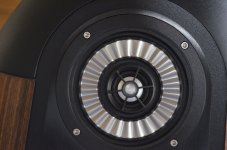 f33e4224f139842a87f1eda3cf215531 (1).jpg486.4 KB · Views: 161
f33e4224f139842a87f1eda3cf215531 (1).jpg486.4 KB · Views: 161 -
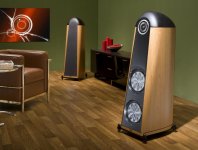 CS37_corderro.jpg140 KB · Views: 139
CS37_corderro.jpg140 KB · Views: 139 -
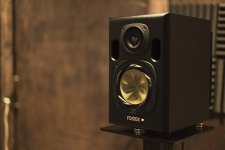 91t54AmWBKL._SL1500_.jpg124.4 KB · Views: 148
91t54AmWBKL._SL1500_.jpg124.4 KB · Views: 148 -
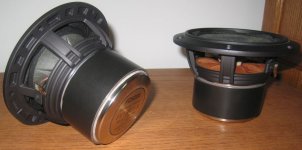 649295332_large_827682b9061465b2b87b1e3b8d08541a.jpg113.3 KB · Views: 140
649295332_large_827682b9061465b2b87b1e3b8d08541a.jpg113.3 KB · Views: 140 -
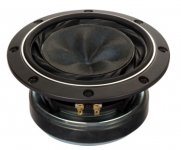 fw168hr_front.jpg83.2 KB · Views: 146
fw168hr_front.jpg83.2 KB · Views: 146 -
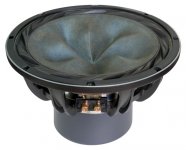 w400ahr_front_2.jpg77.5 KB · Views: 138
w400ahr_front_2.jpg77.5 KB · Views: 138
Last edited:
I don't know what that cone in Fostex serves for, but it measures quite dreadfully.
The Thiel, at least as implemented by them, is also very fatiguing sounding. That doesn’t necessarily mean anything about the midrange, except that it’s a horrid tweeter baffle/waveguide.
These comments sound familiar.
Whereas later Thiels were superior in many respects, they didn't grab me in the same way the CS3s did.
The SEAS 10" & 5" + the Dynaudio D28AF tweeter provided a relaxed listening experience, but later Thiels were much too bright/forward for my taste.
Whereas later Thiels were superior in many respects, they didn't grab me in the same way the CS3s did.
The SEAS 10" & 5" + the Dynaudio D28AF tweeter provided a relaxed listening experience, but later Thiels were much too bright/forward for my taste.
Last edited:
I highlighted Fostex, because it's a Japanese company and... apart from the well known Laboratory Series drivers, they also manufactured some impressive monitors in the early 1980's.
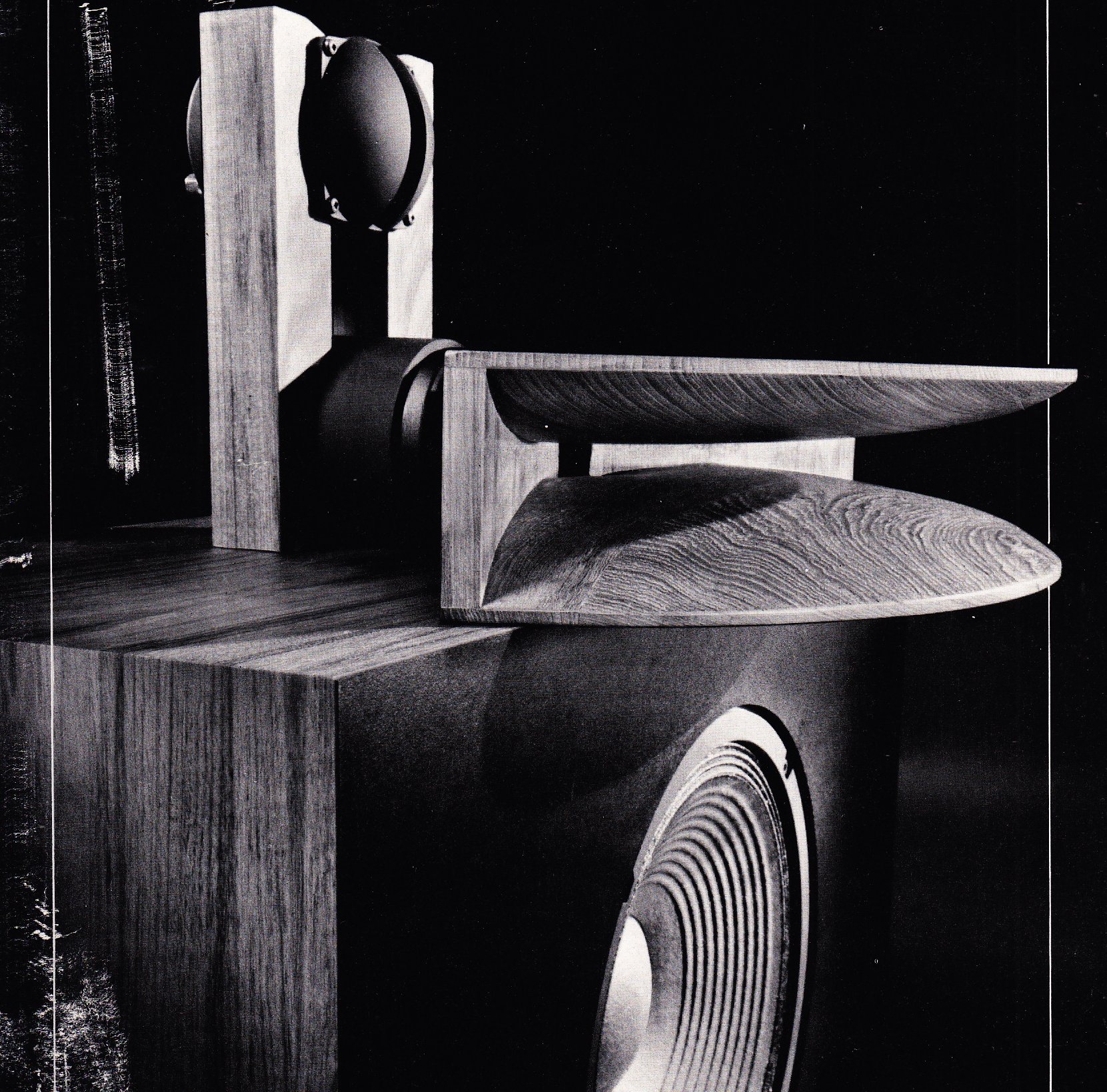
Celestion made pioneering use of Laser Doppler Interferometry to analyse diaphragm behaviour in the 1980's.
Once again, in the seventies the Japanese lead the way in analysing diaphragm behaviour and experimenting with diaphragm materials.
One of the most remarkable research projects was published by ISAMI NOMOTO, MAKOTO IWAHARA, AND HIDEO ONOYE from Victor Company of Japan, Ltd., Tokyo in 1975.
"For a shaped pulse excitation, responses at 3000 points in a plane through the major axis of a loudspeaker are measured and stored. The data are then processed and converted to visual. representations at 10-µs intervals. The resulting display is photographed sequentially for observation of wave-front motion away from the loudspeaker."
In other words, these guys made wave fronts visible!

Celestion made pioneering use of Laser Doppler Interferometry to analyse diaphragm behaviour in the 1980's.
Once again, in the seventies the Japanese lead the way in analysing diaphragm behaviour and experimenting with diaphragm materials.
One of the most remarkable research projects was published by ISAMI NOMOTO, MAKOTO IWAHARA, AND HIDEO ONOYE from Victor Company of Japan, Ltd., Tokyo in 1975.
"For a shaped pulse excitation, responses at 3000 points in a plane through the major axis of a loudspeaker are measured and stored. The data are then processed and converted to visual. representations at 10-µs intervals. The resulting display is photographed sequentially for observation of wave-front motion away from the loudspeaker."
In other words, these guys made wave fronts visible!
Attachments
Last edited:
The Axi2050's diaphragm is basically flat, but deviates from existing designs in some respects.
One is the location and size of the voicecoil, another is the shape of the features.
Thiel might have taken a pretty good look at the flat diaphragms developed by the Japanese in the late 1970's and early 1980's. Besides Sony, Technics has put a lot of R&D effort into flat diaphragms.
In 2015 they revived this technology with the launch of Technics SB-10 and SB-R1.
The diaphragms are based on those developed for the SB series from the 70's and 80's.
These vintage Technics speakers were never very popular outside of Asia, but highly regarded by many today.
One is the location and size of the voicecoil, another is the shape of the features.
Thiel might have taken a pretty good look at the flat diaphragms developed by the Japanese in the late 1970's and early 1980's. Besides Sony, Technics has put a lot of R&D effort into flat diaphragms.
In 2015 they revived this technology with the launch of Technics SB-10 and SB-R1.
The diaphragms are based on those developed for the SB series from the 70's and 80's.
These vintage Technics speakers were never very popular outside of Asia, but highly regarded by many today.
An externally hosted image should be here but it was not working when we last tested it.
Last edited:
Here's the AES paper "Loudspeaker with Honeycomb Disk Diaphragm" by
Sakamoto, Naraji; Satoh, Katsuaki; Satoh, Kazue; Atoji, Nobuhisa
(Acoustic Research Laboratory, Matsushita Electric Industrial Company, Ltd., Osaka, Japan, 1981)
Description:
New loudspeakers have been developed, using honeycomb disk diaphragms, which exhibit low distortion, wide frequency range, and uniform frequency response. These characteristics are realized by using a very rigid diaphragm. The rigidity is brought about by varying the cell size of the honeycomb core in the direction of the radius and by driving the diaphragm at its first nodal circle. The result is a very desirable density gradient and equivalent Young's modulus.
Sakamoto, Naraji; Satoh, Katsuaki; Satoh, Kazue; Atoji, Nobuhisa
(Acoustic Research Laboratory, Matsushita Electric Industrial Company, Ltd., Osaka, Japan, 1981)
Description:
New loudspeakers have been developed, using honeycomb disk diaphragms, which exhibit low distortion, wide frequency range, and uniform frequency response. These characteristics are realized by using a very rigid diaphragm. The rigidity is brought about by varying the cell size of the honeycomb core in the direction of the radius and by driving the diaphragm at its first nodal circle. The result is a very desirable density gradient and equivalent Young's modulus.
Attachments
-
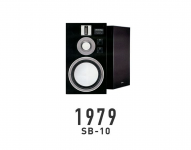 SB-10_1979.png327.3 KB · Views: 117
SB-10_1979.png327.3 KB · Views: 117 -
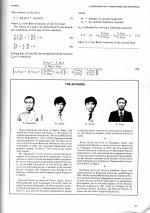 Loudspeaker-with-honeycomb-disk-diaphragm-9.jpg226.4 KB · Views: 101
Loudspeaker-with-honeycomb-disk-diaphragm-9.jpg226.4 KB · Views: 101 -
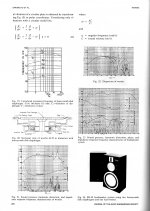 Loudspeaker-with-honeycomb-disk-diaphragm-8.jpg263.9 KB · Views: 123
Loudspeaker-with-honeycomb-disk-diaphragm-8.jpg263.9 KB · Views: 123 -
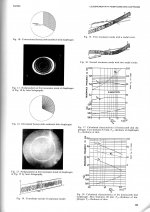 Loudspeaker-with-honeycomb-disk-diaphragm-7.jpg190.2 KB · Views: 113
Loudspeaker-with-honeycomb-disk-diaphragm-7.jpg190.2 KB · Views: 113 -
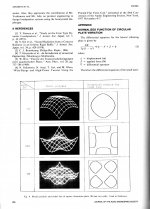 Loudspeaker-with-honeycomb-disk-diaphragm-6.jpg189.8 KB · Views: 130
Loudspeaker-with-honeycomb-disk-diaphragm-6.jpg189.8 KB · Views: 130 -
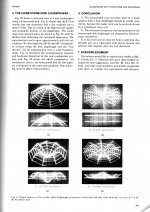 Loudspeaker-with-honeycomb-disk-diaphragm-5.jpg242.6 KB · Views: 128
Loudspeaker-with-honeycomb-disk-diaphragm-5.jpg242.6 KB · Views: 128 -
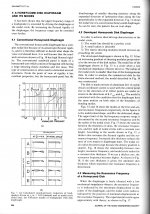 Loudspeaker-with-honeycomb-disk-diaphragm-4.jpg326.3 KB · Views: 105
Loudspeaker-with-honeycomb-disk-diaphragm-4.jpg326.3 KB · Views: 105 -
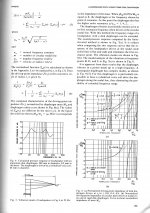 Loudspeaker-with-honeycomb-disk-diaphragm-3.jpg270.8 KB · Views: 110
Loudspeaker-with-honeycomb-disk-diaphragm-3.jpg270.8 KB · Views: 110 -
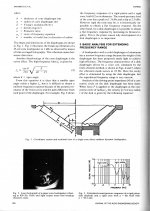 Loudspeaker-with-honeycomb-disk-diaphragm-2.jpg227.7 KB · Views: 120
Loudspeaker-with-honeycomb-disk-diaphragm-2.jpg227.7 KB · Views: 120 -
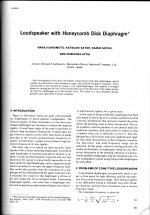 Loudspeaker-with-honeycomb-disk-diaphragm-1.jpg256.6 KB · Views: 108
Loudspeaker-with-honeycomb-disk-diaphragm-1.jpg256.6 KB · Views: 108
In other words, these guys made wave fronts visible!
Is that the fabled HOM I see in the horn plot?
Here's the SB-10 Whitepaper.
Attachments
Is that the fabled HOM I see in the horn plot?
Keep in mind, HOMs can be very easily visualized in the Hornresp wavefront simulator.
I find it interesting that such a simple simulator achieves results that are surprisingly similar to BEM tools like axidriver and ABEC, but the Hornresp results are *animated*, which really helps me figure out what the issue is. This is particularly handy for phase plugs.
I guess if we had thirty two core CPUs and gigabytes of ram, it might be practical to use software that does animated BEM sims. My laptop is a quad core Ryzen and it still takes about two minutes to run an Axidriver sim.
the latest ryzen does have 32 cores!
AMD's wild 32-core Ryzen Threadripper chip goes on sale
AMD's wild 32-core Ryzen Threadripper chip goes on sale
But ABEC and Axidriver don't use GPUs 
Which really sucks; this type of software is ideal for that.
It is kinda funny that the Celestion BEM simulations of this driver, featured in the Youtube video, aren't a whole lot different than Hornresp simulations like this:


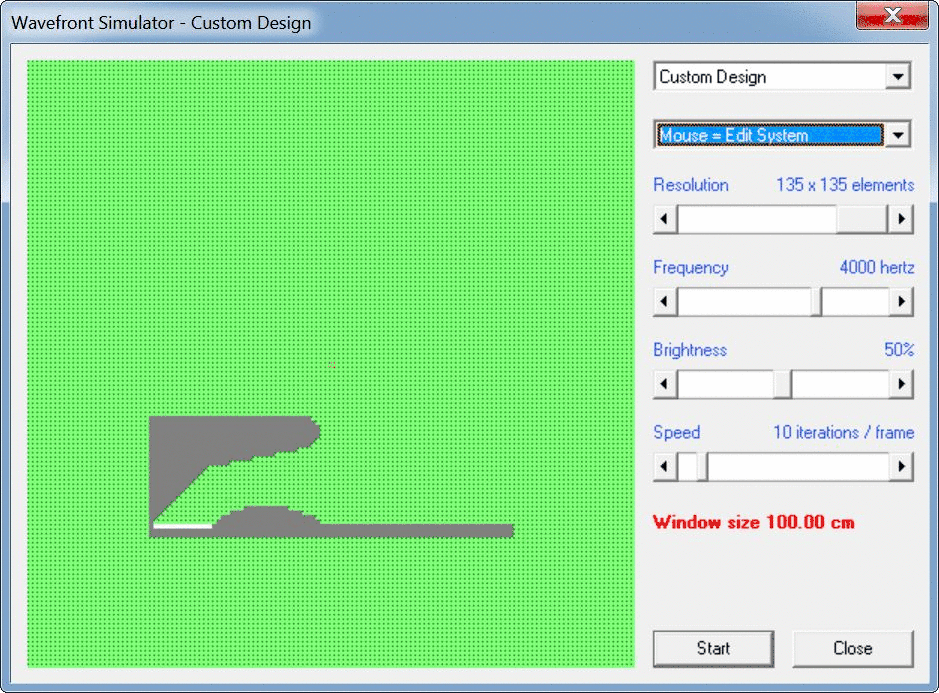
from here : Cloning a $3200 Speaker for $400
Animations created with Hornresp wavefront simulator and Image Magick
Which really sucks; this type of software is ideal for that.
It is kinda funny that the Celestion BEM simulations of this driver, featured in the Youtube video, aren't a whole lot different than Hornresp simulations like this:



from here : Cloning a $3200 Speaker for $400
Animations created with Hornresp wavefront simulator and Image Magick
These wavefront sims can be misleading (see attachment).
I know GP Acoustics' subsidiaries utilise high-end software including Siemens PLM.
ABEC and Axidriver are very powerful tools. Hard to beat in terms of price/performance,
but obviously limited compared to Ansys, Comsol, Siemens etc.
I know GP Acoustics' subsidiaries utilise high-end software including Siemens PLM.
ABEC and Axidriver are very powerful tools. Hard to beat in terms of price/performance,
but obviously limited compared to Ansys, Comsol, Siemens etc.
Attachments
Last edited:
May be available this month:
Celestion Announces NAMM 2019 Debut of Axi2050 Axiperiodic Driver | Live Design
Also found a related PhD thesis:
https://eprints.soton.ac.uk/348798/1/Jack%20Oclee-Brown%20PhD%20Thesis.pdf
Celestion Announces NAMM 2019 Debut of Axi2050 Axiperiodic Driver | Live Design
Also found a related PhD thesis:
https://eprints.soton.ac.uk/348798/1/Jack%20Oclee-Brown%20PhD%20Thesis.pdf
- Home
- Loudspeakers
- Multi-Way
- New Celestion "AxiPeriodic Driver"
